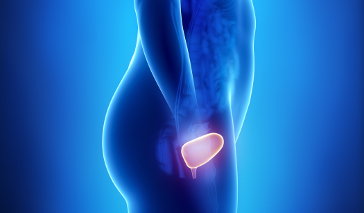Bladder outlet obstruction (BOO) is a blockage at the bottom of the bladder that stops or slows the urine from passing out of it. Considered a lower urinary tract obstruction, this condition results in less urine flowing from the urethra (the tube that carries urine out of the body).
Most adults produce 1.5 to 2 liters of urine a day. When a blockage is present, the pressure of the urine builds up in the upper urinary tract. If left untreated, this can damage the bladder or kidneys. In addition, a bladder outlet obstruction can lead to a urinary tract infection, high blood pressure (as the body has trouble getting rid of fluids), or bladder stones (as the urine becomes stagnant and more concentrated).
Bladder Outlet Obstruction Causes
Bladder outlet obstruction can be caused by several conditions, most commonly:
- Enlarged prostate (benign prostatic hyperplasia, also known as BPH): The bladder rests on top of the prostate gland, and the urethra passes through it. When the prostate is enlarged, it can press against the bladder outlet or compress the urethra, both of which may obstruct the flow of urine.
- Bladder cancer or other pelvic cancers: In certain locations, a tumor (abnormal growth of body tissue) can block the opening of the bladder or compress the urethra.
- Bladder stones: These hard deposits of crystallized minerals can form when the urine remains in the bladder too long. If the stones become too large to pass naturally from the bladder into the urethra, they can block the bladder's outlet.
- Scarring of the urethra: Scarring from previous surgery or injury can narrow the urethra and cause urine to back up into the bladder.
The frequency of bladder outlet obstruction in the general population is unknown, but studies have found that it occurs in 20 to 35 percent of elderly men, often due to BPH. In young and middle-aged men, bladder stones tend to be the cause. In women, gynecologic surgery, pregnancy and cancers of the pelvic organs can all lead to bladder outlet obstruction.
Medications such as decongestants, antihistamines, antidepressants and drugs used to treat an overactive bladder can also cause BOO. These medications can interfere with the bladder's ability to contract and empty itself of urine. Some might also increase the level of calcium in urine or cause fluctuations in the pH of urine, resulting in bladder stones. If the stone becomes too large, it can cause a blockage.
Bladder Outlet Obstruction Symptoms
When urine is unable to freely pass through the bladder and out of the urethra because of an obstruction, many symptoms can occur. They include:
- Pain in the abdomen or during urination
- Feeling like you always have a full bladder
- The need to urinate frequently
- Difficulty starting urination
- Starting and stopping urination
- Slow or no flow of urine
- Waking up in the middle of the night to urinate.
Bladder Outlet Obstruction Diagnosis
Because bladder outlet obstruction can damage the kidneys or bladder, proper diagnosis and quick treatment are essential to avoiding long-term problems.
A doctor will do a physical exam and talk to the patient about their symptoms in order to look for signs of the underlying cause of the obstruction, such as an enlarged prostate (men), a fallen bladder (women), an enlarged bladder or an abdominal growth.
The treating physician will also use various tests to determine the location of the blockage and the best treatment, including:
- Blood tests to check for signs of kidney damage
- Tests to identify narrowing of the urethra or enlargement of the prostate. Typically, these exams consist of inserting a cystoscope (a specially designed tube with a small camera at the tip of it) or performing an X-ray.
- Ultrasound (a device that uses shock waves to capture images inside the body) to look for the location of the blockage and to see if the bladder is emptying properly.
- Tests to look for blood or bacteria in the urine (urinalysis).
Bladder Outlet Obstruction Treatment
Bladder outlet obstruction treatment options will depend on the underlying cause. Because of the risks for kidney or bladder damage, prompt treatment is vital.
References
Gerber GS, Brendler CB. Evaluation of the Urologic Patient: History, Physical Examination, and Urinalysis. Campbell-Walsh Urology, 10th ed. 2011.
Medline Plus: Bladder outlet obstruction. http://www.nlm.nih.gov/medlineplus/ency/article/002238.htm. Accessed on February 9, 2013.
Medscape Reference: Urinary Obstruction. http://emedicine.medscape.com/article/778456-overview. Accessed on February 9, 2013.


